In Florence , restoration work on the eight interior facades of the Baptistery has been completed: the magnificent wall mosaics in addition to those covering the vault and the triumphal arch, made with exceptional chromatic variety of glass tesserae and precious materials (such as coral), now shine in a new light, the one that can now be seen by all after the scaffolding that allowed the operations inside the “beautiful San Giovanni,” as Dante Alighieri called it, has been uninstalled.
Directed and financed by theOpera di Santa Maria del Fiore with 2.6 million euros and with a contribution from the Friends of Florence Foundation for the work on the scarsella, the restoration of the interior walls of the Florence Baptistery was conducted under the high supervision of the Soprintendenza Archeologia, Belle Arti e Paesaggio for the metropolitan city of Florence and the provinces of Pistoia and Prato, and the collaboration for diagnostic investigations with Italian universities and specialized laboratories. The operations, however, are not finished: in fact, in the fall, the assembly of a special construction site will begin, which will allow the impressive restoration of the approximately 1,200 square meters of mosaics of the Baptistery’s dome, which will last several years, and at the same time allow visitors to be brought to see them up close.
The restoration of the Baptistery’s interior walls of white marble, Prato green and mosaics, which began in late 2017 and was interrupted several times due to the Covid-19 pandemic, proved to be very complex and affected both the structure and the architecture and mosaic decoration of the monument. The last part to be restored was the apse (also referred to as the “scarsella” because of its typology), covered on the vault and triumphal arch by marvelous mosaics that were probably executed in the second half of the 13th century, when work was still being done on those of the dome, which according to the date inscribed here had begun around 1225. The mosaics on the walls, on the other hand, date from the first and second decades of the 14th century.


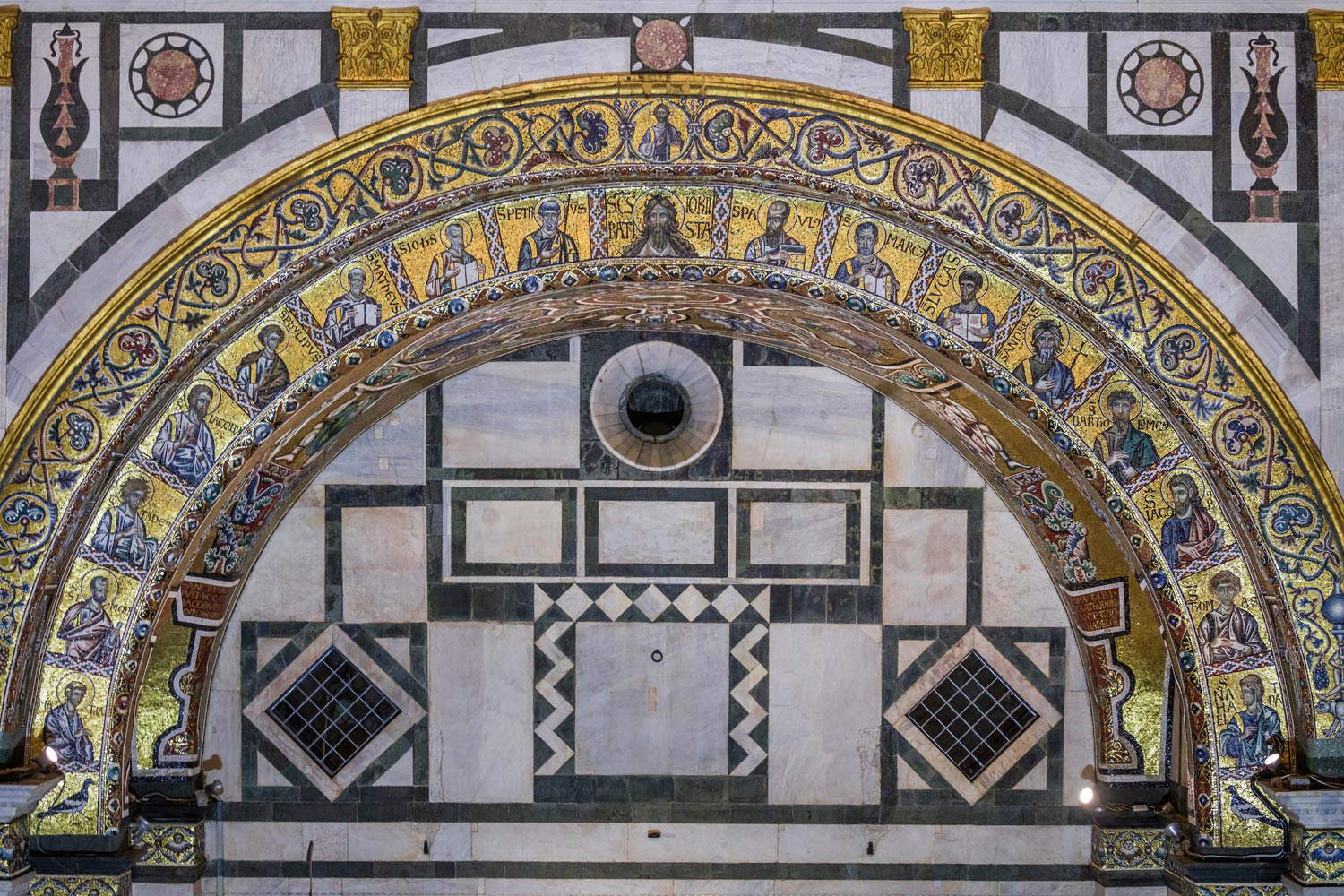


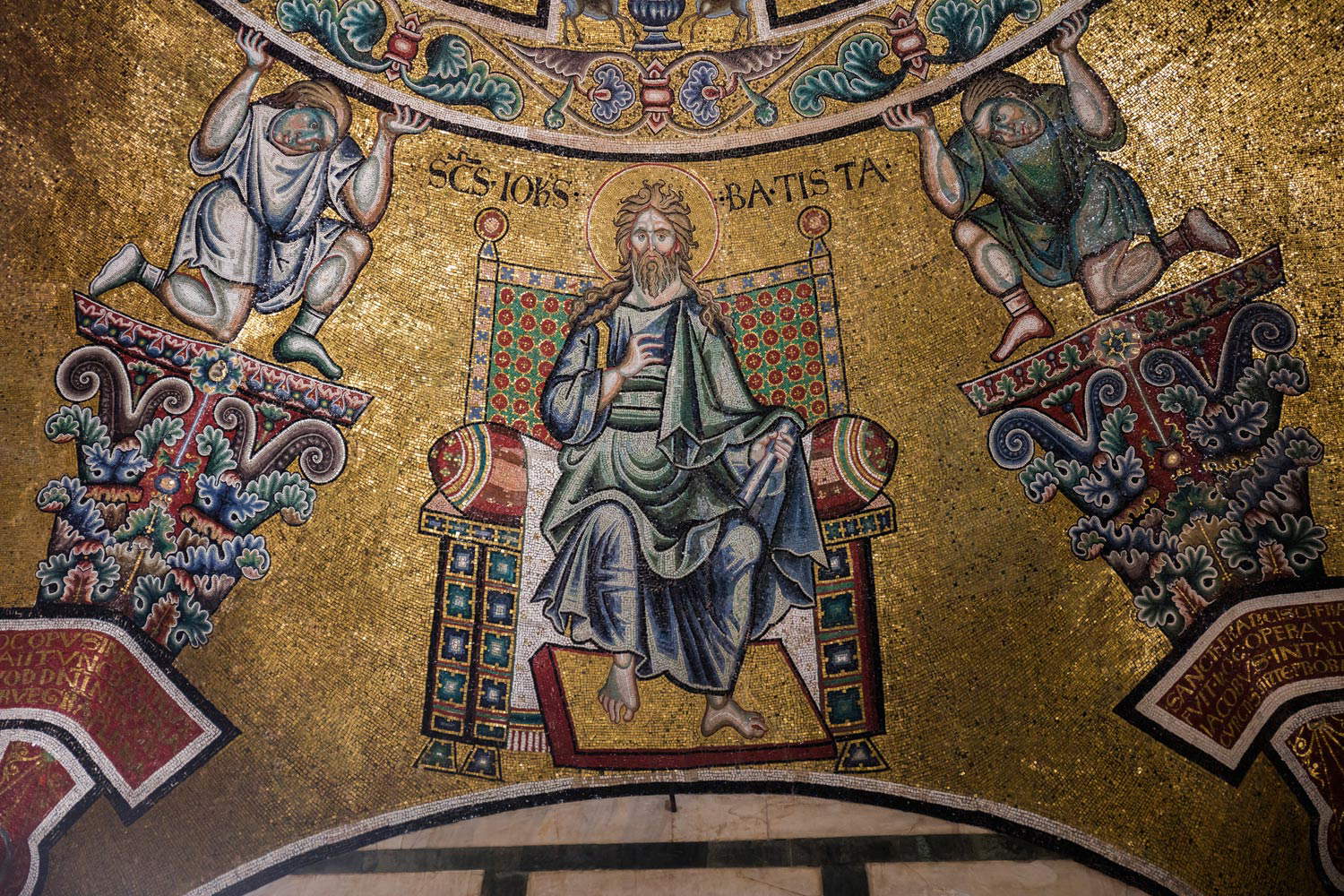



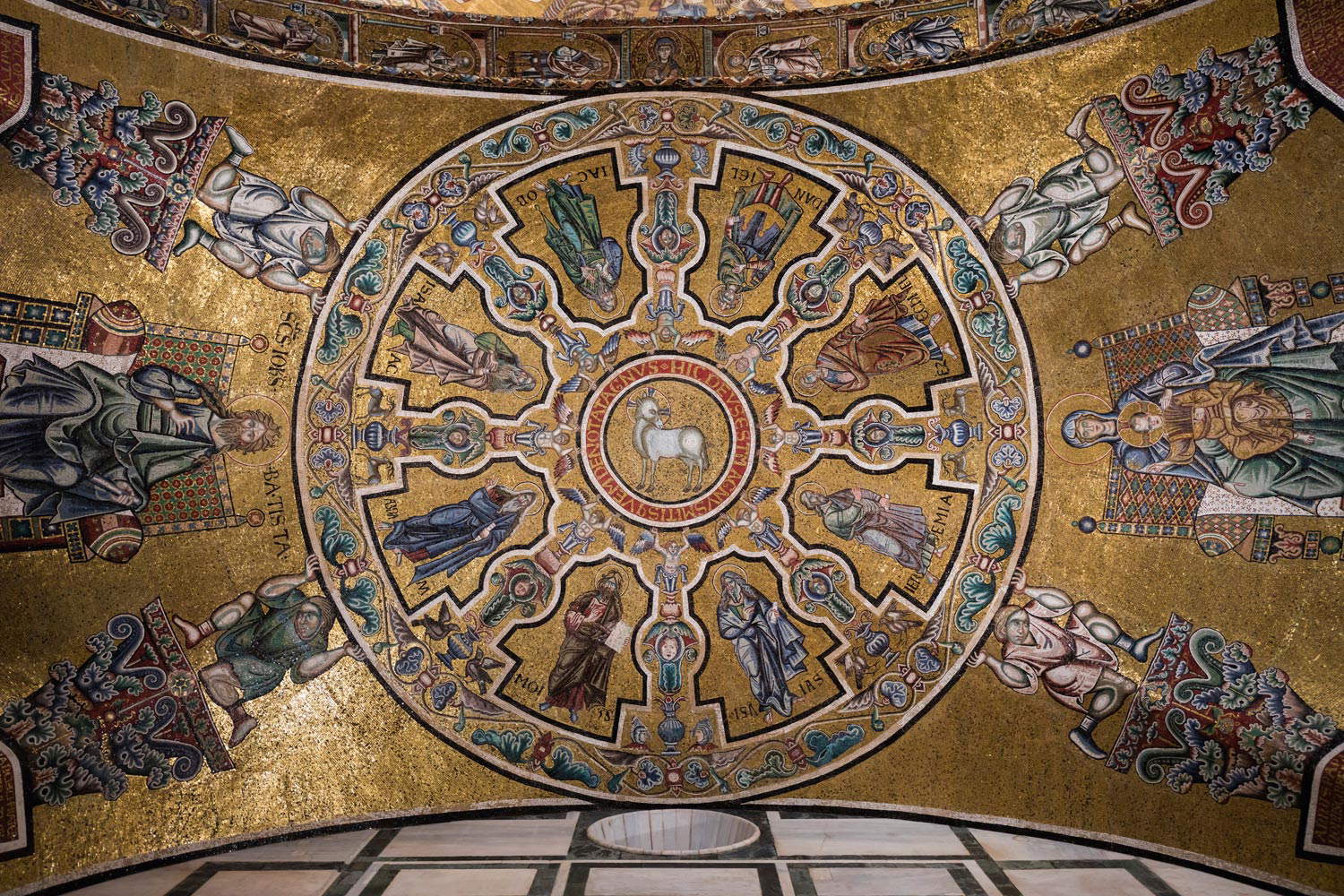

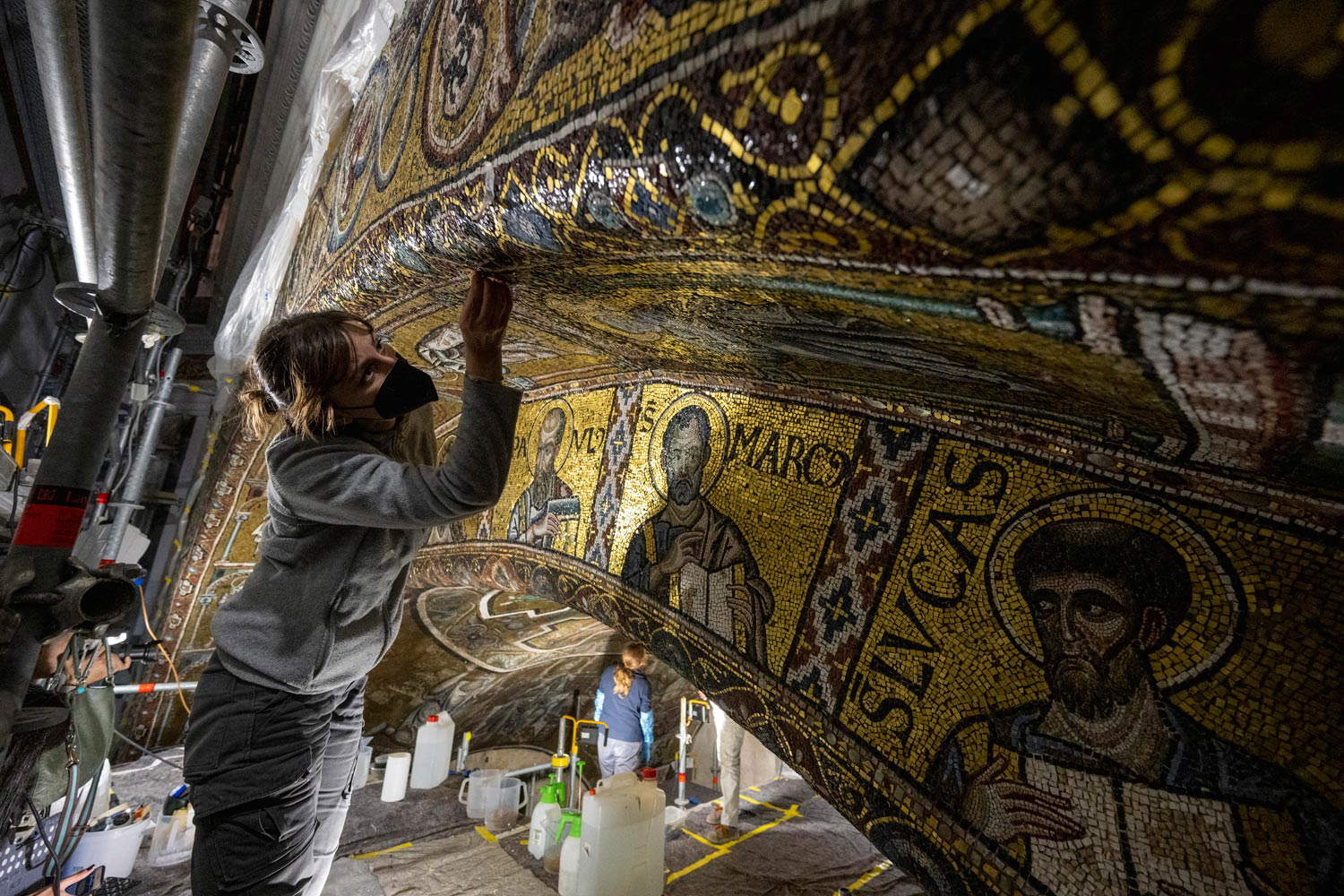
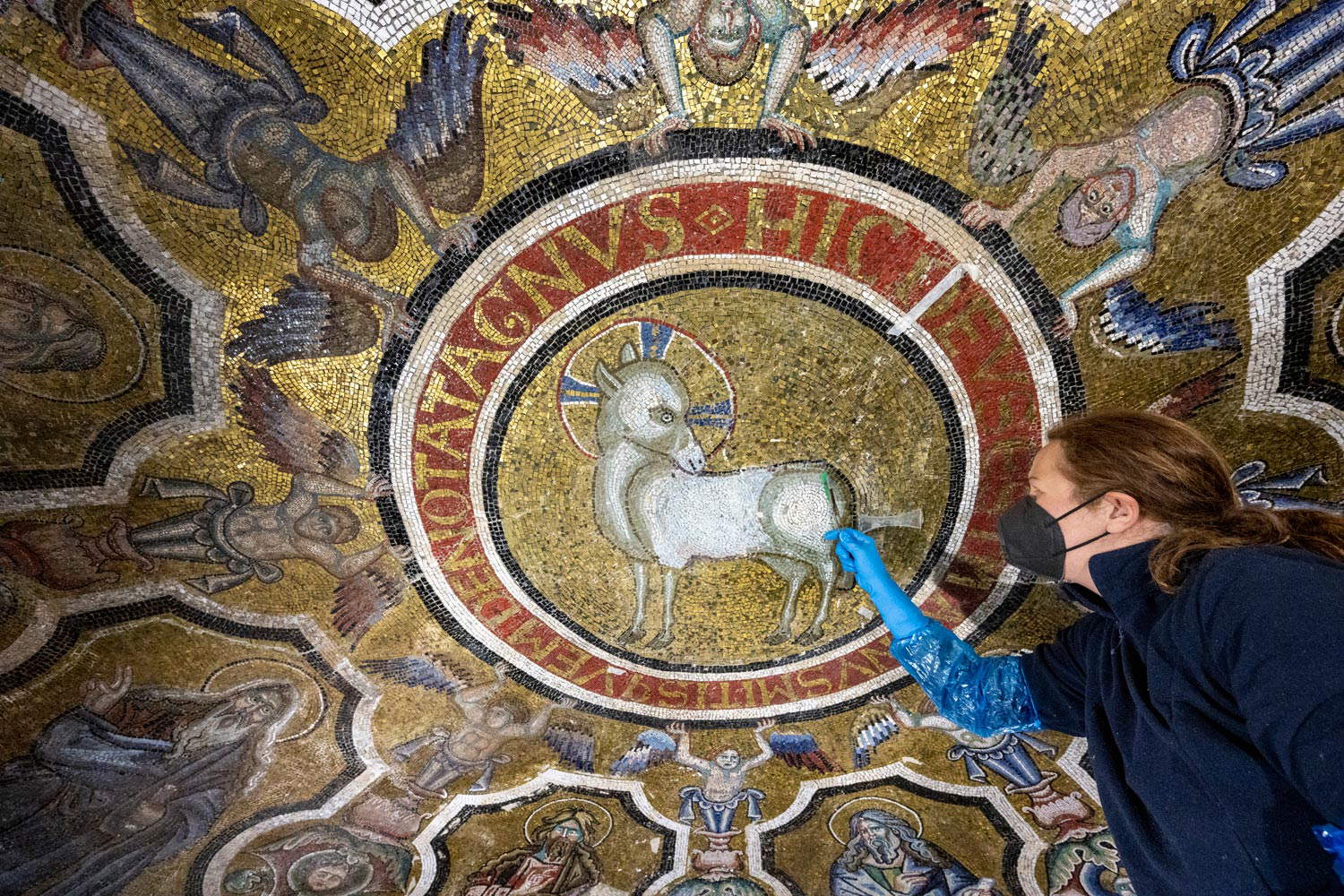
The mosaics of the scarsella differ from the wall mosaics in both narrative complexity and technique of execution. In these mosaics, in fact, tesserae of extremely minute size and an extraordinary chromatic variety of vitreous pastes and other precious materials were used, including coral (which to date does not appear to have been used elsewhere in mosaic art) in sprigs or in sections that go to form microscopic circular or teardrop-shaped tesserae.
If the mosaics on the other seven interior facades of the Baptistery depict prophets, bishop saints, and cherubim, those in the scarsella showcase a rich iconographic program. The vault depicts the mirror images of the Madonna and the Baptist seated on a throne, flanked by four telamons supporting the large central wheel. This is divided into eight spokes, occupied by solemn figures of biblical patriarchs and prophets who heralded the coming of Christ, symbolized in the lamb in the center of the wheel with an epigraph, which translated from Latin reads “Here is God Almighty indicated by the meek lamb.” Other figures of prophets appear in the intrados of the triumphal arch, while on the outer lintel there are depicted busts of Apostles, Evangelists and Saints flanking the centrally placed Baptist.
Numerous discoveries emerged during the restoration of the eight facades, which was preceded by a campaign of studies and diagnostic investigations never before carried out so thoroughly on the entire monument and its history: from the absolutely original mosaic technique employed in the wall mosaics, a true unicum, to the traces of gold leaf on one of the capitals of the women’s galleries, which could indicate how they were also originally all gilded. A Baptistery, then, completely covered in gold: in the capitals of the women’s galleries, in the wall mosaics and in the immense mosaic dome. Illuminated only by the lights of candles.

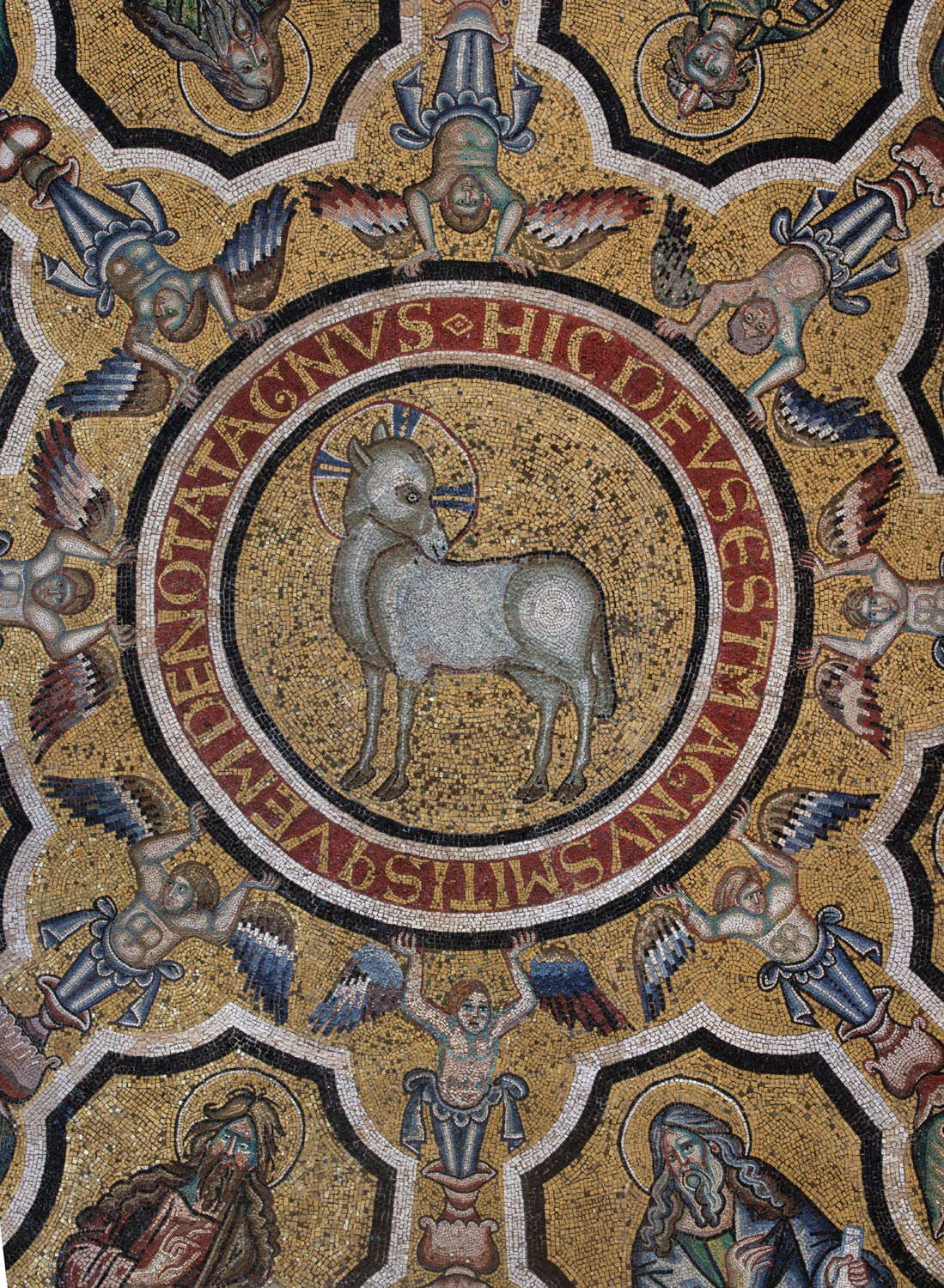
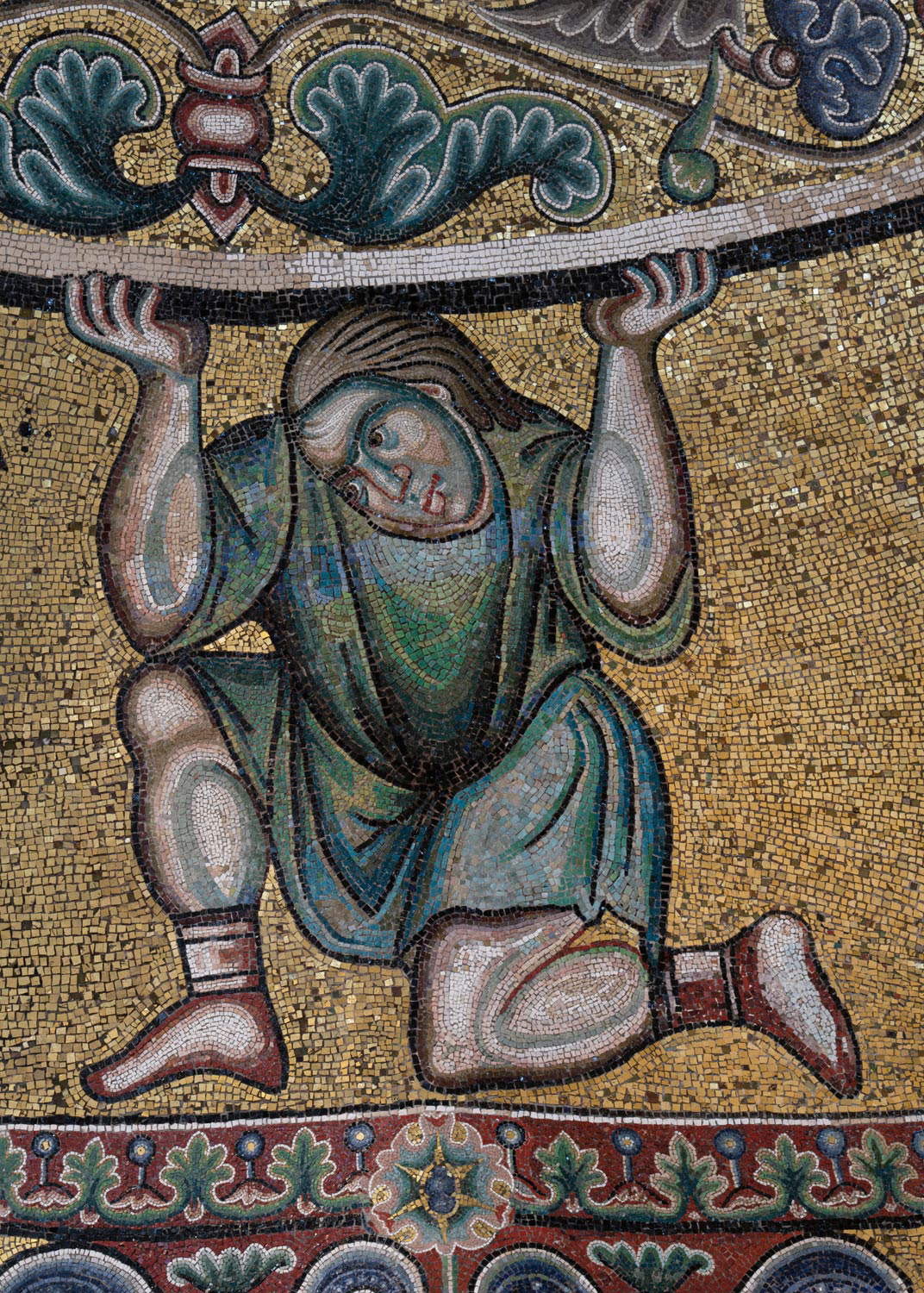
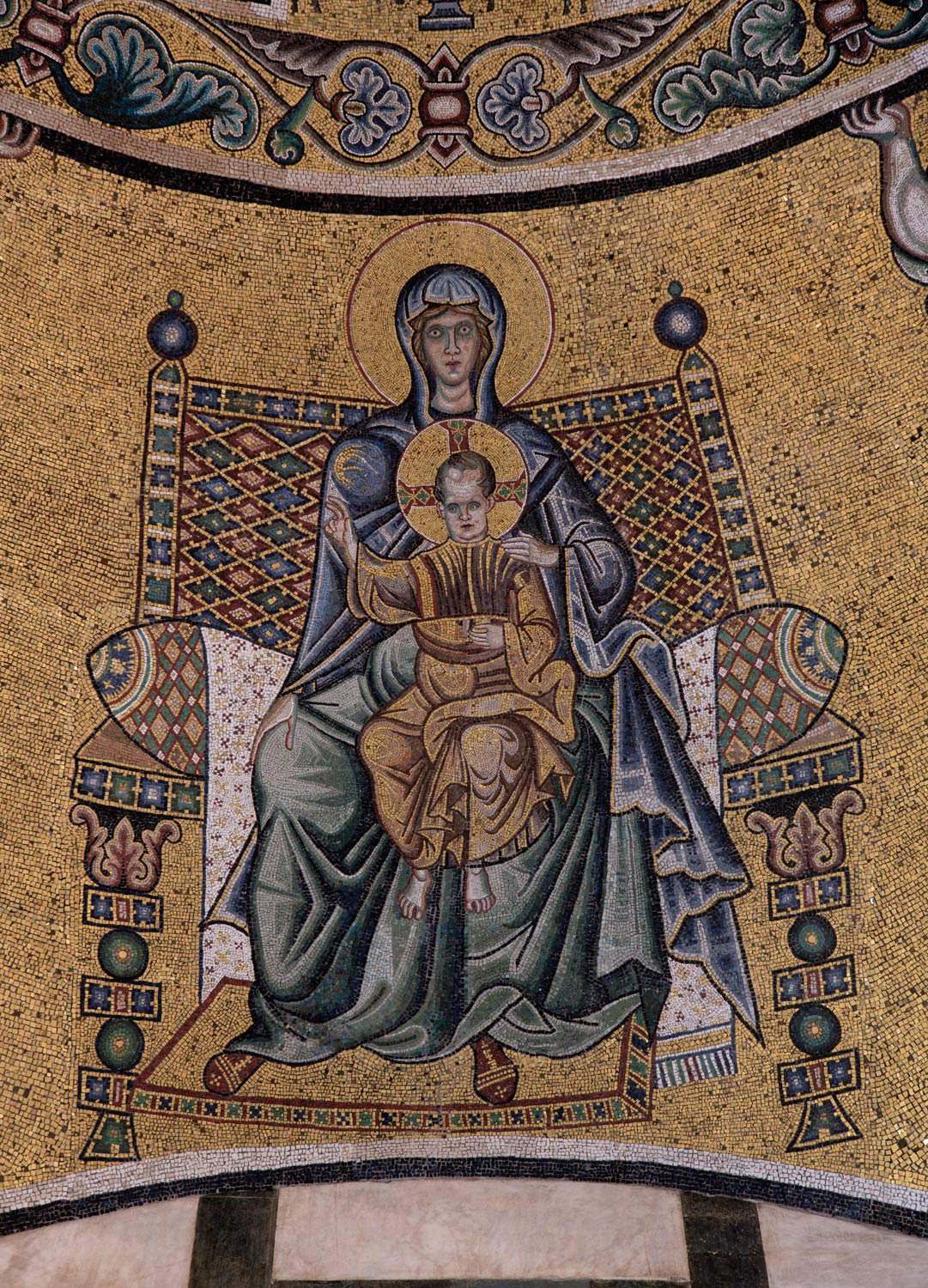
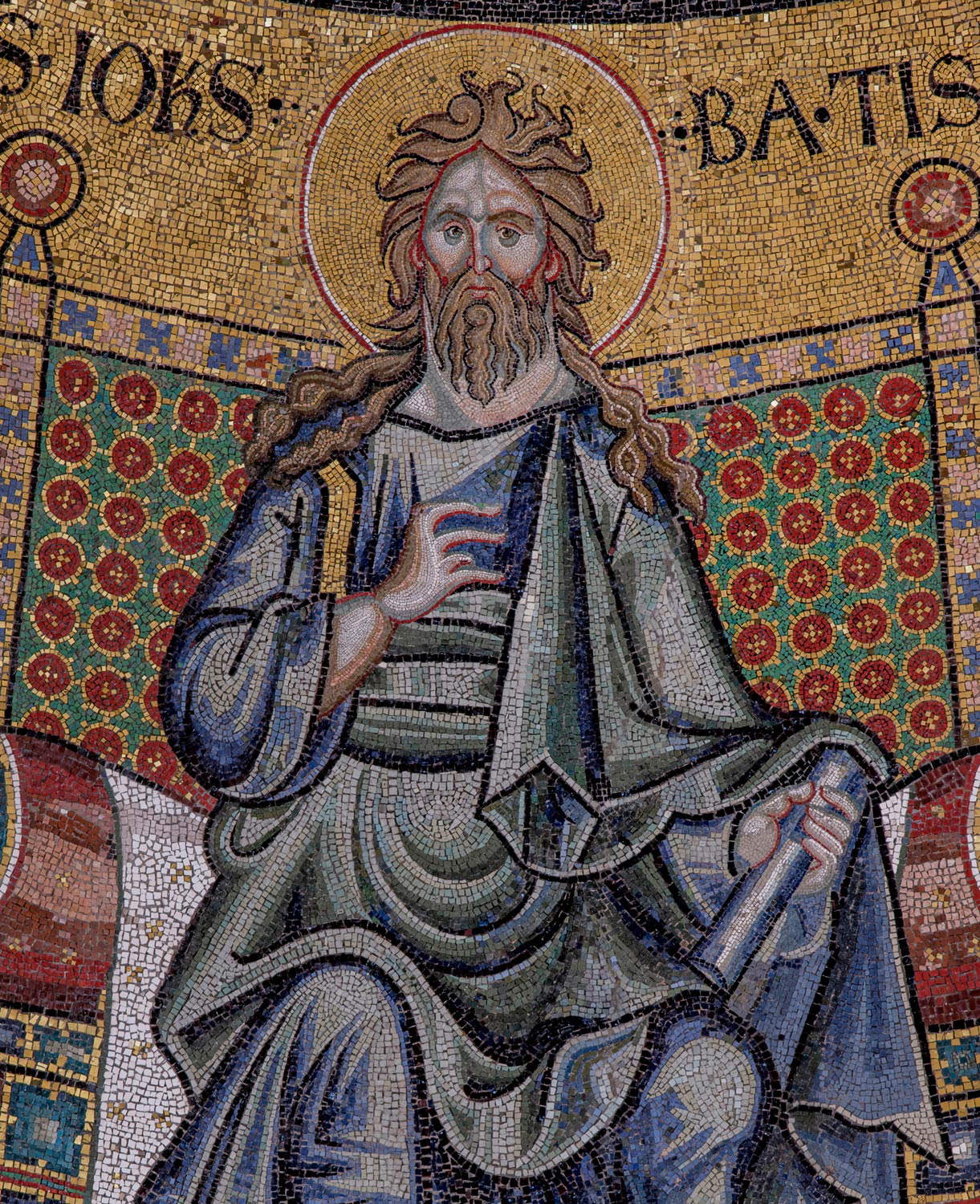
“Despite the slowdowns caused by the pandemic,” says Vincenzo Vaccaro, Opera di Santa Maria del Fiore board member with responsibility for architectural restorations, “the Opera has been able to respect what is the primary reason for its existence, which is to provide for the maintenance and enhancement of the monuments and assets in its possession.”
Beatrice Agostini, who was responsible for the design and direction of the architectural and mosaic work, explains that "The restoration of the mosaic decorations was particularly challenging because we had to deal with various types of problems: from the absolutely original mosaic technique used in the wall mosaics, a true unicum, to previous restoration work, as in the scarsella, and with diverse and precious materials ranging from glass tesserae to coral."
“The new construction site for the restoration of the dome,” explains Samuele Caciagli, architect of the Opera di Santa Maria del Fiore, “will be a structure consisting of a central column, resting on the ground, and horizontal structures placed about 15 meters above the ground. Starting from the base of the dome, the scaffolding will be structured around the entire perimeter. The same will be raised until it covers all the surfaces involved in the restoration work.”
During the restoration of the interior facades of the Baptistery, a cleaning operation was also carried out on the funeral monument of the antipope John XXIII, a work by Donatello and Michelozzo, which was freed of the surface dust that covered its gilding. Other restoration activities involved the ancient marble inlay floor, which also represents the zodiac and where it is written, “Here come all those who wish to see admirable things.”
 |
| Florence Baptistery, restoration of interior wall mosaics completed |
Warning: the translation into English of the original Italian article was created using automatic tools. We undertake to review all articles, but we do not guarantee the total absence of inaccuracies in the translation due to the program. You can find the original by clicking on the ITA button. If you find any mistake,please contact us.